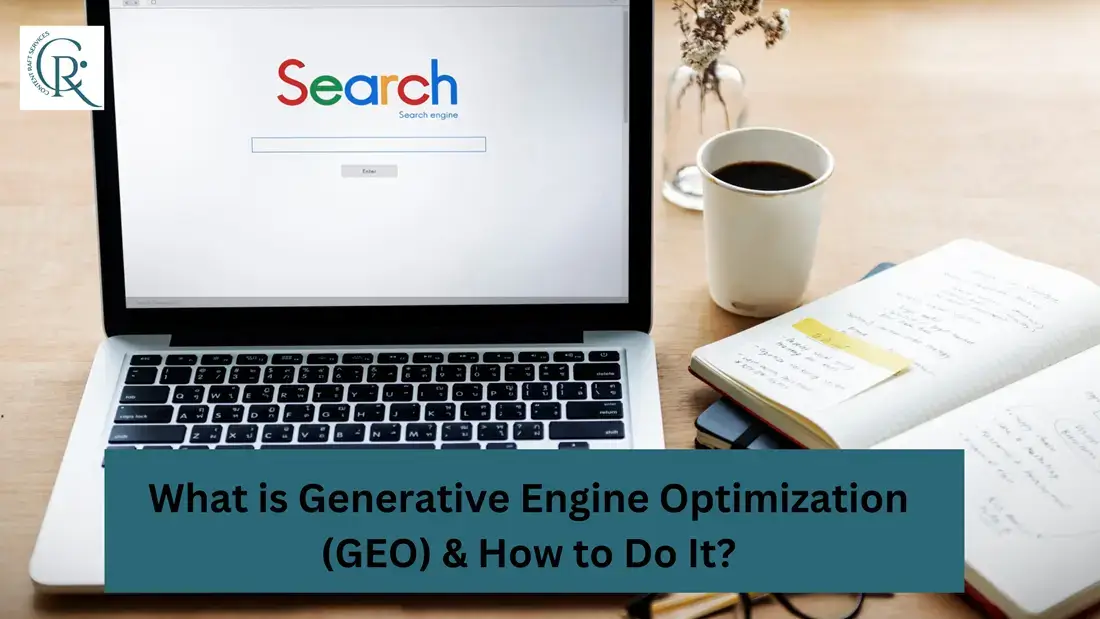
Generative Engine Optimization (GEO) is the practice of creating and structuring content so that generative AI search engines (like ChatGPT, Google’s Search Generative Experience, Perplexity, Claude, and others) are more likely to pull from your website in their answers. Unlike traditional SEO, which aims to rank in search engine results pages (SERPs), GEO aims to get your content cited or summarized directly in AI-generated responses.
With the rise of AI-assisted search, users are increasingly getting answers without clicking through to websites. GEO ensures your brand remains visible in this zero-click environment.
Why GEO Matters?
The way people search is changing. Instead of scanning links on Google, many users now go straight to AI platforms to get quick, summarized answers. Generative search tools gather information from multiple sources to compile their responses. If your site isn’t optimized for these engines, you could lose visibility—even if your traditional SEO is strong.
As AI-generated answers become more common, it’s crucial that your content is not only discoverable but also preferred by these models. If your content isn’t being cited, you’re missing out on a powerful traffic and brand awareness opportunity.
How to Do Generative Engine Optimization (GEO)
Here are practical, actionable steps SEO professionals can take to implement GEO effectively:
1. Answer Questions Directly
- Start content with a clear and concise answer to the query.
- Use question-based H2 or H3 headings followed by short, factual paragraphs.
- Include bullet points or numbered lists when possible.
- Format content similarly to featured snippets, as AI tools often favor this structure.
2. Showcase E-E-A-T (Experience, Expertise, Authoritativeness, Trustworthiness)
- Use data, expert quotes, and research to back up claims.
- Add real-life examples, personal experiences, or case studies to make content unique.
- Cite credible sources and include original insights where possible.
3. Improve Structure with Headers and Markup
- Use structured data (schema markup) like FAQ, HowTo, and Article.
- Break content into scannable sections with relevant subheadings.
- Keep sentences short and use clear, simple language.
4. Optimize for Readability
- Write with clarity: use plain English, short paragraphs, and minimal jargon.
- Use tools like Hemingway or Grammarly to enhance readability.
- Include summaries, FAQs, and quick-reference lists to support scanning.
5. Offer Unique Value
- Add content that generative engines can’t create: personal insights, behind-the-scenes info, or new data.
- Avoid simply rehashing top-ranking content—bring something new to the table.
- Make your expertise stand out with firsthand experience and actionable guidance.
6. Keep SEO Best Practices Intact
- GEO doesn’t replace SEO—it builds on it.
- Maintain proper keyword targeting, page speed, mobile-friendliness, and quality backlinks.
- Avoid keyword stuffing; focus on semantically relevant content.
Tools and Tips to Improve GEO
- AI Search Graders: Tools like HubSpot’s AI graders can evaluate how well your content fits GEO guidelines.
- Prompt Testing: Ask ChatGPT, Bing, or Perplexity your target question and analyze whether your content appears in the answer. If not, revise accordingly.
- Content Freshness: Update pages with current data, years, and references regularly.
- Performance Monitoring: Track referral sources, even from AI platforms, and watch traffic patterns over time.
Final Thoughts
Generative Engine Optimization is fast becoming an essential skill for SEO professionals. As AI-driven search becomes mainstream, the ability to influence how and when your content appears in generative answers is a competitive advantage.
By writing with clarity, formatting for AI readability, and building topical authority, you increase the chances your content will be featured—keeping your brand visible even as the search landscape evolves.
To stay ahead in the digital landscape, it’s crucial to optimize your content for both SEO and GEO. If you’re looking for expert SEO services in UAE to improve your website’s visibility and drive more traffic, our agency is here to help. Contact us today to enhance your online presence and outrank the competition!
Frequently Asked Questions (FAQs)
1. What is Generative Engine Optimization (GEO)?
Generative Engine Optimization (GEO) is an advanced SEO strategy that focuses on optimizing content for AI-driven search engines and generative AI models like ChatGPT, Google’s SGE (Search Generative Experience), and Bing Chat. The goal of GEO is to ensure that AI-powered search results prioritize and reference your content when users seek information.
2. How to Do GEO Optimization?
To optimize for Generative Engine Optimization (GEO), follow these steps:
- Create High-Quality, Contextual Content – Write well-structured, informative, and engaging content that AI models can easily interpret.
- Use Conversational & Natural Language – AI models favor human-like, clear, and structured content.
- Optimize for Entities and Semantic Search – Focus on structured data, rich snippets, and relevant keywords in a meaningful way.
- Leverage FAQs & Long-Tail Keywords – AI-generated answers often pull data from FAQ sections and detailed responses.
- Increase Authoritativeness – Build credibility through backlinks, brand mentions, and expert citations.
- Improve Readability & Formatting – Use bullet points, numbered lists, and structured headings for easy AI interpretation.
3. What is Search Engine Optimization (SEO), and How is It Done?
Search Engine Optimization (SEO) is the process of optimizing a website to rank higher on search engine results pages (SERPs) to drive organic traffic. It involves:
- On-Page SEO – Optimizing meta tags, headers, keyword usage, and internal linking.
- Off-Page SEO – Building backlinks, brand mentions, and social signals.
- Technical SEO – Improving site speed, mobile-friendliness, structured data, and crawlability.
- Content SEO – Creating high-quality, relevant, and engaging content that answers user queries.
- Local SEO – Optimizing Google My Business, NAP (Name, Address, Phone), and local citations.
4. What is GEO in Search Engine Optimization?
GEO in SEO refers to Geographical Optimization, also known as Geo-SEO or Local SEO. It focuses on optimizing content for specific locations to enhance visibility in local search results. This includes:
- Using location-specific keywords (e.g., “best HVAC contractor in Los Angeles”).
- Optimizing Google My Business (GMB) profile with accurate business details.
- Building local citations and backlinks from regional websites.
- Encouraging customer reviews and ratings to build trust and credibility.
